Michigan is home to a fascinating array of 19 sparrow species, each contributing to the state’s avian tapestry with unique characteristics and behaviors.
From the bustling urban presence of House Sparrows to the subtle elegance of the White-crowned Sparrow, these small birds play diverse roles in Michigan’s ecosystems.
This exploration delves into the lives of these feathered inhabitants, unraveling their distinct plumage, preferred habitats, and the intricate roles they play in the state’s ecology.
Whether found in grassy meadows, wooded areas, or urban landscapes, these sparrows offer a captivating glimpse into the interconnected and vibrant world of Michigan’s birdlife.
Join us on a journey through the Great Lakes State as we uncover the charm and significance of these 19 sparrow species that call Michigan home. Stay sharp.
19 Sparrows in Michigan
Explore the diverse world of sparrows and tiny avian wonders that grace Michigan’s landscapes.
Each species contributes to the rich tapestry of the state’s birdlife, from the adaptable House Sparrow to the elusive Grasshopper Sparrow.
Join this journey to discover the unique characteristics and lifestyles of these feathered inhabitants of the Great Lakes State.
1. House Sparrow
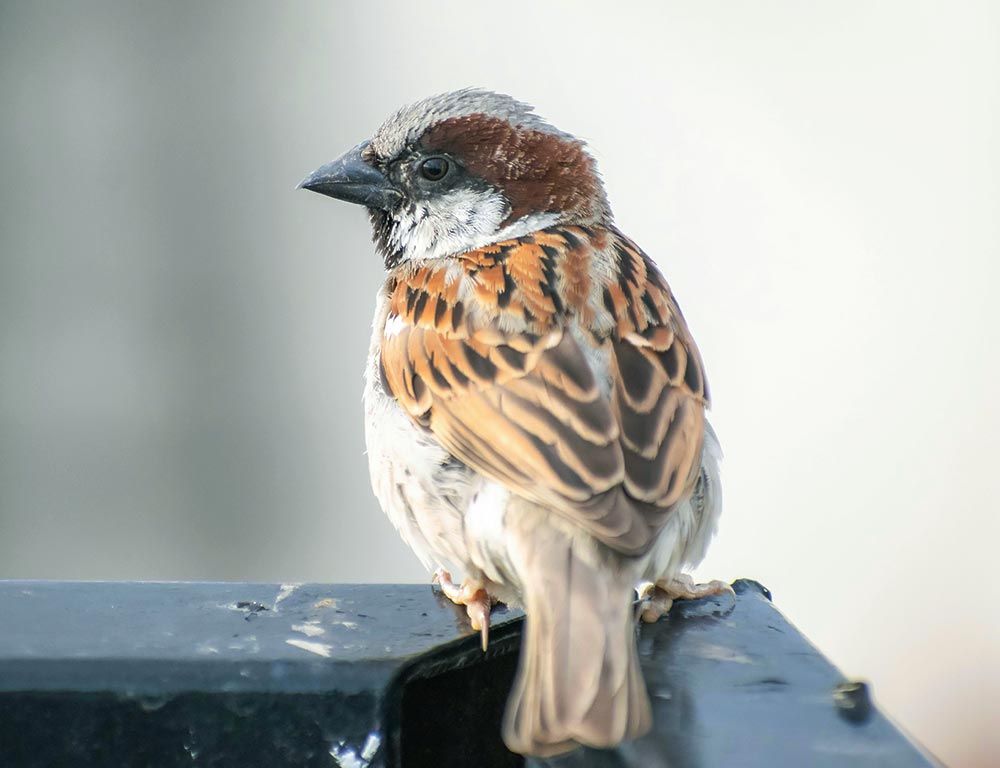
- Scientific name: Passer domesticus
- Population: Abundant and widespread
- Life span: 3-5 years
- Size: 5.5-7.1 inches
- Weight: 1.1-1.8 ounces
- Food: Seeds, grains, insects, human food scraps
The House Sparrow, introduced from Europe, has become familiar in Michigan. With its brown and gray plumage, the male features a black bib on its throat, while the female is more subdued.
These adaptable birds thrive in urban and suburban areas, often nesting in buildings and forming large, noisy flocks. Their diet includes seeds, grains, and insects, making them highly adaptable to human-altered environments.
House Sparrows have a relatively short life span, but their high reproductive rate ensures a stable population.
2. Song Sparrow
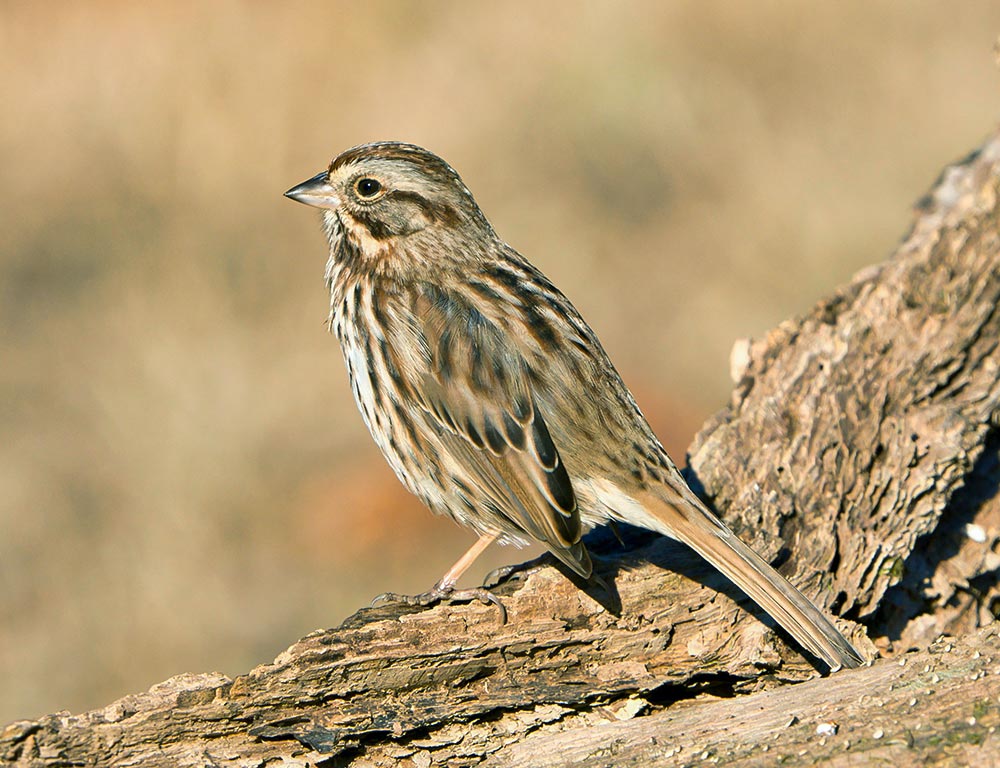
- Scientific name: Melospiza melodia
- Population: Common and widespread
- Life span: 3-7 years
- Size: 5.5-7.1 inches
- Weight: 0.7-1.4 ounces
- Food: Insects, seeds, berries
The Song Sparrow is a melodious and ubiquitous bird in Michigan. Its plumage is a mix of brown, gray, and streaks, with regional variations.
Known for their varied songs, males use these tunes to establish territory and attract mates.
Song Sparrows are versatile in their habitat, found in marshes, woodlands, and urban areas. They have a diverse diet, including insects, seeds, and berries.
With a longer life span than House Sparrows, Song Sparrows contribute to the state’s rich avian biodiversity.
3. Swamp Sparrow
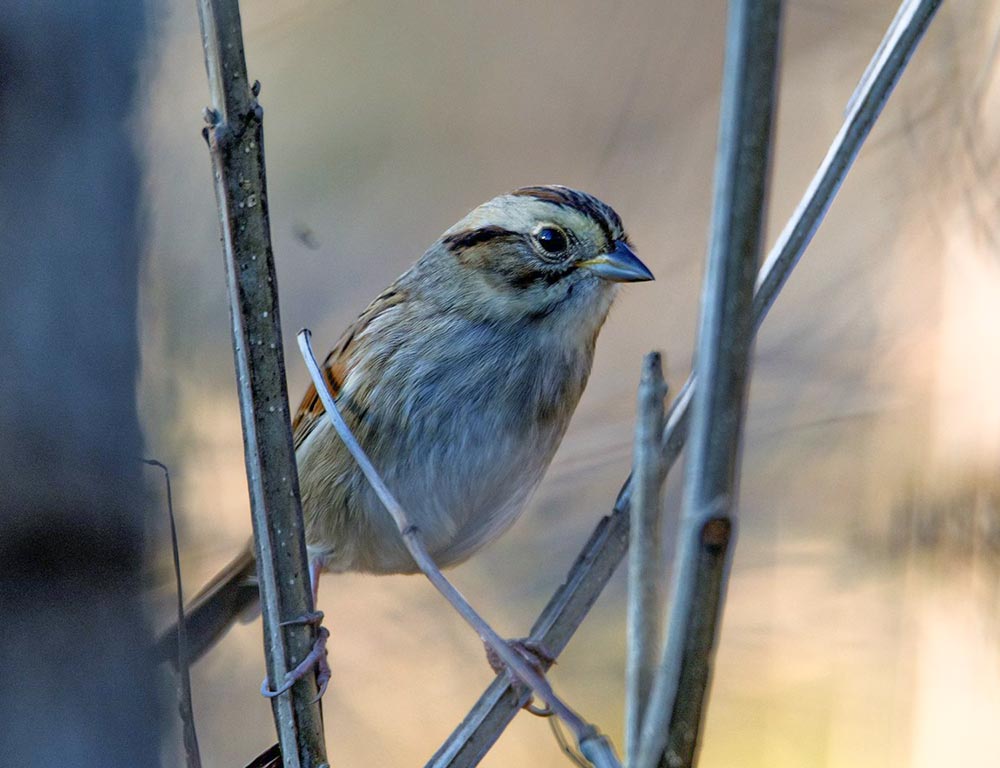
- Scientific name: Melospiza georgiana
- Population: Common in wetland areas
- Life span: 2-5 years
- Size: 5.1-6.7 inches
- Weight: 0.5-1.0 ounces
- Food: Insects, seeds, aquatic invertebrates
The Swamp Sparrow, as its name suggests, is associated with wetland habitats in Michigan. Its plumage features a rusty crown and grayish-brown streaks.
These sparrows are well-adapted to marshes and wet meadows, where they forage for insects, seeds, and aquatic invertebrates.
Their secretive nature makes them challenging to spot, but their distinctive trill often gives away their presence. With a shorter life span, Swamp Sparrows play a vital role in wetland ecosystems.
4. Chipping Sparrow
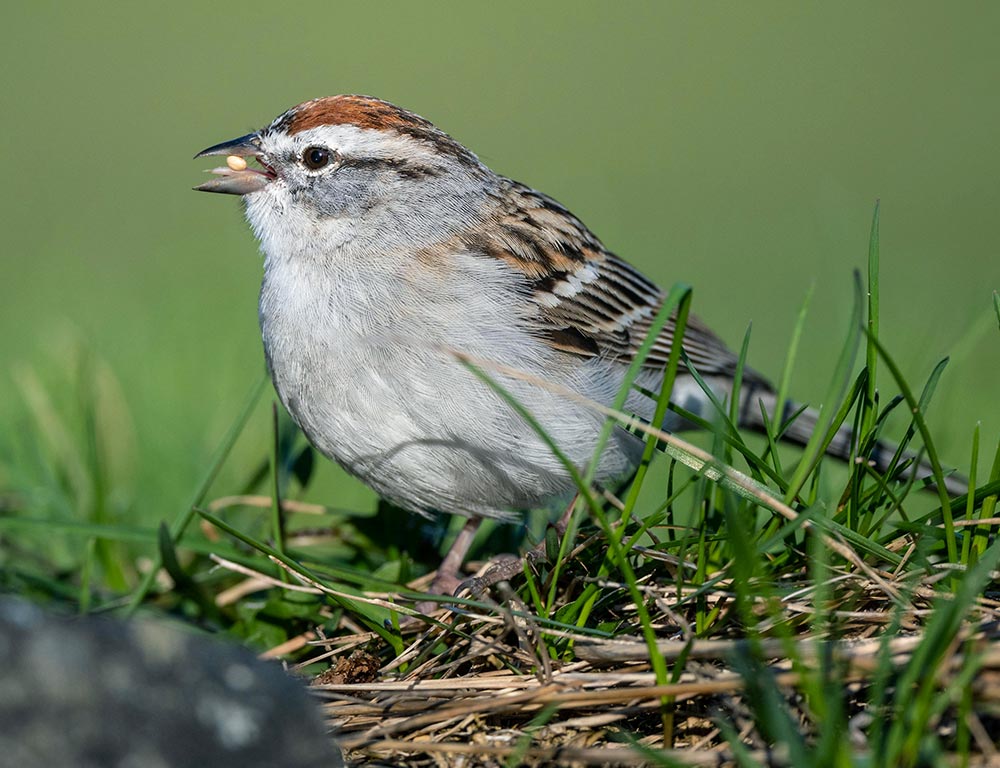
- Scientific name: Spizella passerina
- Population: Common and widespread
- Life span: 2-6 years
- Size: 4.7-5.9 inches
- Weight: 0.4-0.6 ounces
- Food: Seeds, insects, berries
The Chipping Sparrow is a small, elegant bird with crisp, bright plumage, featuring a rusty cap on its head during the breeding season.
Found in a variety of habitats, from forests to gardens, they are known for their distinct chipping call. Chipping Sparrows primarily feed on seeds, insects, and berries, making them adaptable to different environments.
Their nesting habits often involve using fine grasses and plant fibers. Despite their small size, Chipping Sparrows contribute to the ecological balance in Michigan.
5. Field Sparrow
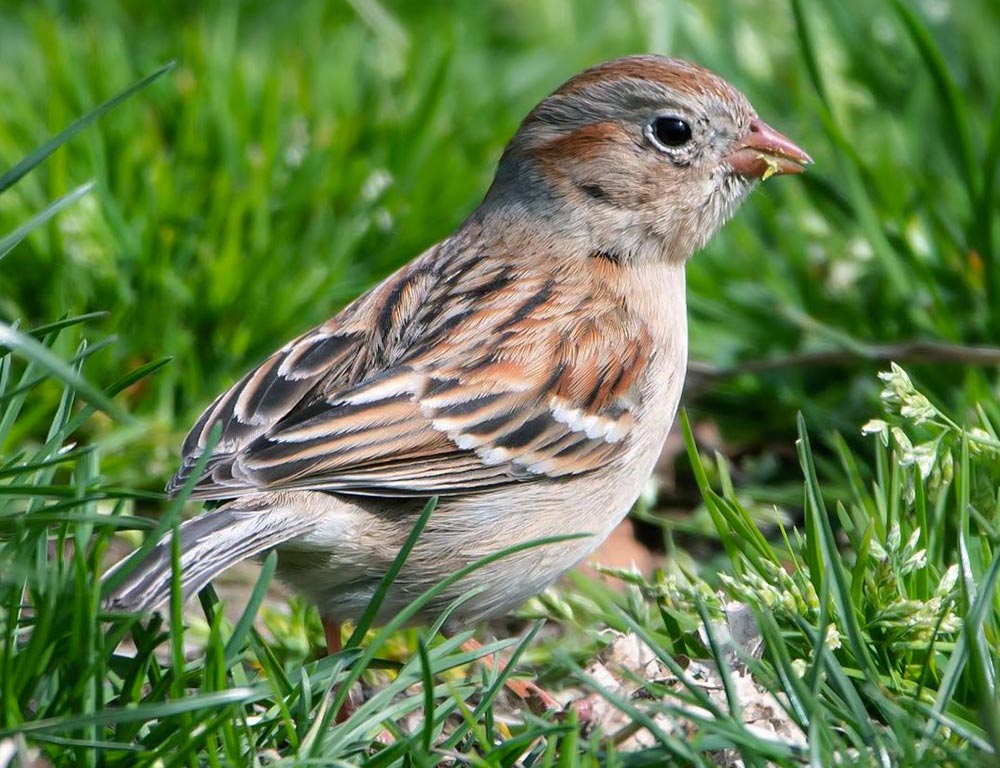
- Scientific name: Spizella pusilla
- Population: Common in grassy habitats
- Life span: 2-4 years
- Size: 4.5-5.5 inches
- Weight: 0.4-0.6 ounces
- Food: Seeds, insects, spiders
The Field Sparrow is a small, finely marked bird with a pink bill and distinct facial markings.
These sparrows are commonly found in grassy habitats, such as fields and meadows, where they forage for seeds, insects, and spiders.
Known for their sweet, melodious songs, Field Sparrows play a role in the acoustic diversity of Michigan’s landscapes.
While they have a relatively short life span, their adaptation to grassland ecosystems contributes to the overall avian biodiversity in the state.
6. Savannah Sparrow
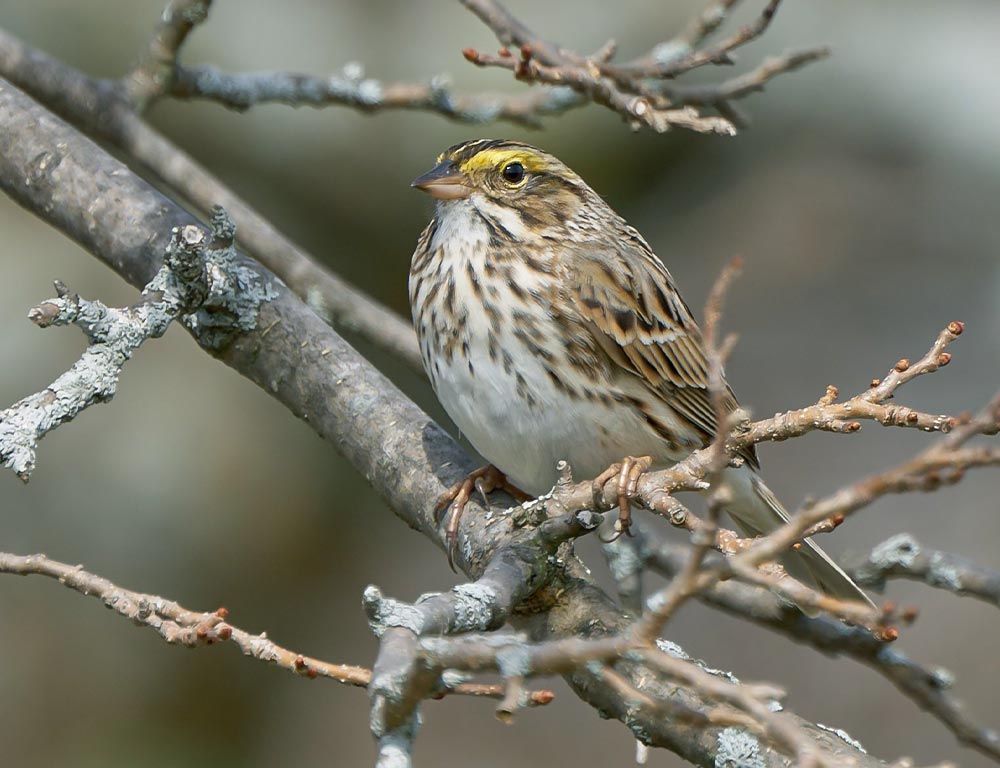
- Scientific name: Passerculus sandwichensis
- Population: Common in grassy habitats
- Life span: 2-5 years
- Size: 4.7-6.3 inches
- Weight: 0.5-1.0 ounces
- Food: Seeds, insects, small invertebrates
The Savannah Sparrow is a small, slender bird with streaked plumage, a yellowish eyebrow stripe, and a notched tail. This species is prevalent in grasslands, salt marshes, and agricultural fields.
Savannah Sparrows have adapted to varied environments, and their diet consists of seeds, insects, and small invertebrates.
Their ability to thrive in different grassy habitats makes them essential to Michigan’s avian diversity.
7. Vesper Sparrow
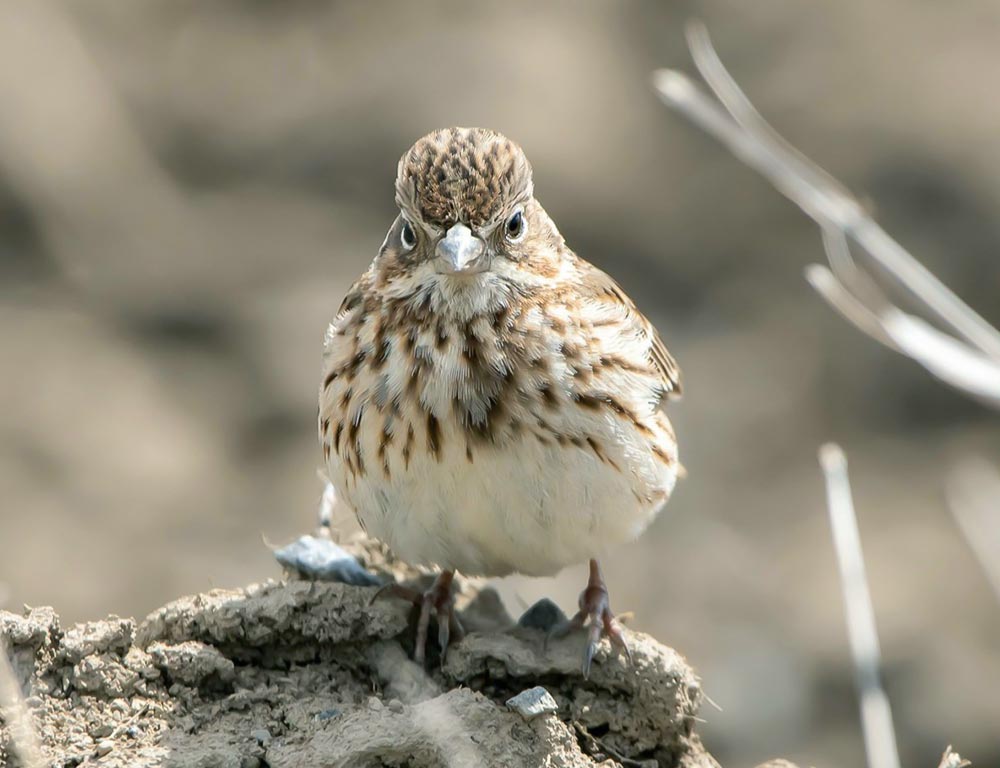
- Scientific name: Pooecetes gramineus
- Population: Common in grasslands and meadows
- Life span: 2-5 years
- Size: 5.9-7.5 inches
- Weight: 0.9-1.3 ounces
- Food: Seeds, insects, small invertebrates
The Vesper Sparrow is a medium-sized sparrow with distinctive facial markings, including a white eye ring and a mustache stripe. This species is often found in grasslands, meadows, and open areas.
Vesper Sparrows feed on a diet of seeds, insects, and small invertebrates. Their melodious song and adaptable nature contribute to their presence in Michigan’s grassy landscapes.
8. Clay-colored Sparrow
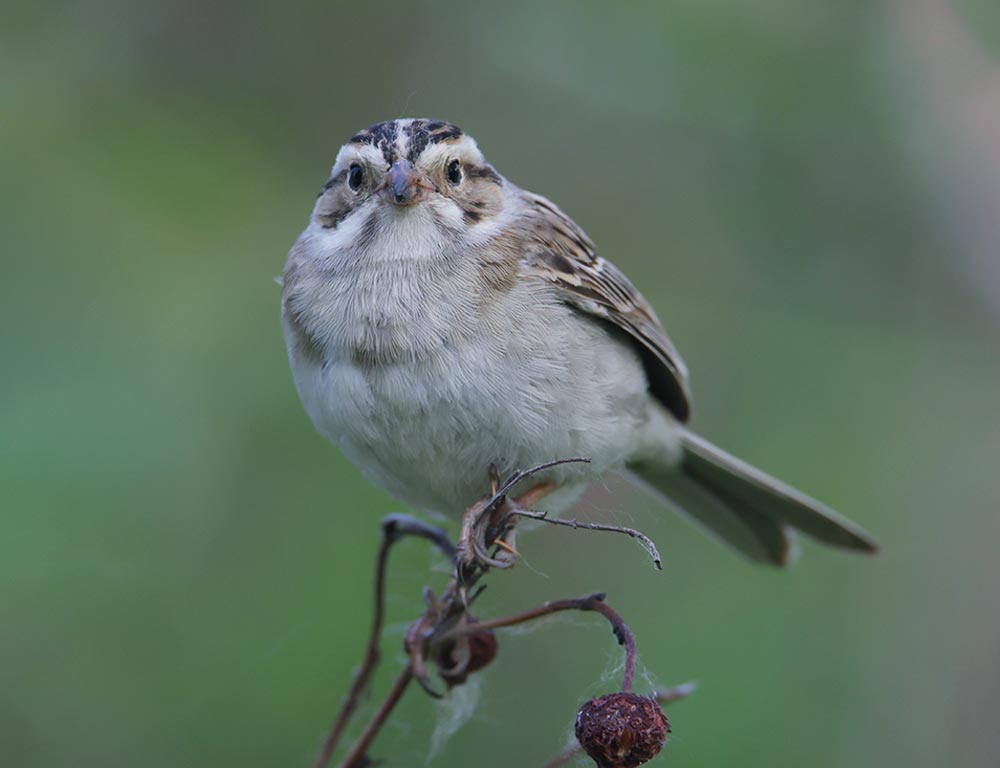
- Scientific name: Spizella pallida
- Population: Common in grasslands and shrubby areas
- Life span: 2-6 years
- Size: 4.7-5.9 inches
- Weight: 0.5-0.8 ounces
- Food: Seeds, insects, berries
The Clay-colored Sparrow is a small, subtly colored bird with a pale crown and buffy face. It is often found in grasslands, prairies, and shrubby areas. Their diet consists of seeds, insects, and berries.
Despite their unassuming appearance, these sparrows play a crucial role in maintaining the ecological balance of Michigan’s diverse habitats.
9. Lincoln’s Sparrow
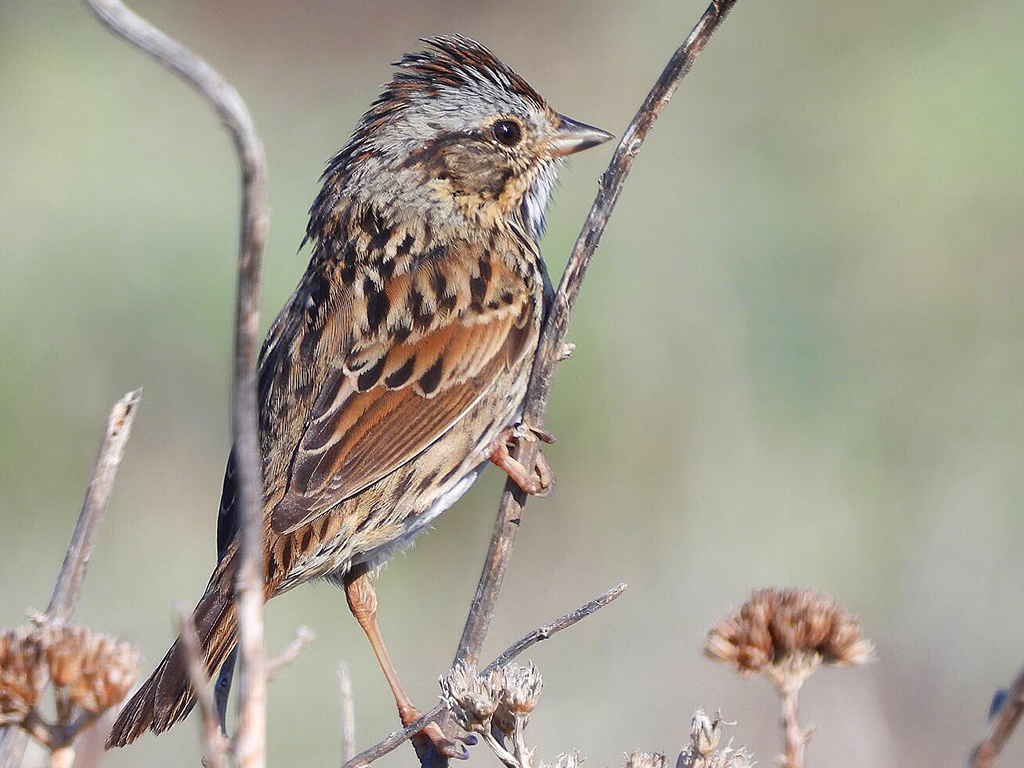
- Scientific name: Melospiza lincolnii
- Population: Common in wetlands and dense vegetation
- Life span: 2-6 years
- Size: 4.7-6.3 inches
- Weight: 0.5-1.0 ounces
- Food: Insects, spiders, seeds
The Lincoln’s Sparrow is a small, subtly marked bird with a buffy breast and fine streaks on its sides. This species is often found in wetlands, thickets, and dense vegetation.
Lincoln’s Sparrows feed on a diet of insects, spiders, and seeds. Their secretive behavior and preference for dense cover make them a challenging but rewarding find for birdwatchers in Michigan.
Despite their relatively short life span, they contribute to the biodiversity of the state’s wetland ecosystems.
10. White-crowned Sparrow
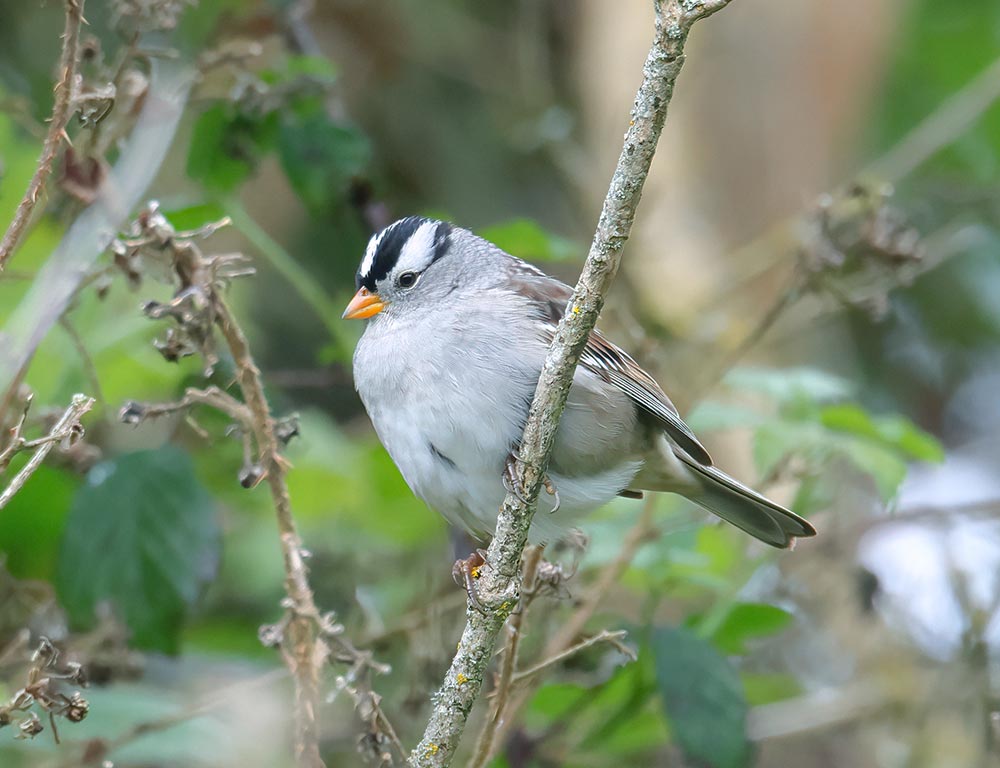
- Scientific name: Zonotrichia leucophrys
- Population: Common in various habitats
- Life span: 3-5 years
- Size: 6.3-7.1 inches
- Weight: 1.0-1.4 ounces
- Food: Seeds, insects, berries
The White-crowned Sparrow is a striking bird with a bold black and white striped crown. It has a gray face, a pink or yellow bill, and a distinctive black throat patch.
White-crowned Sparrows are adaptable and can be found in various habitats, including open woodlands, shrubby areas, and gardens.
Their diet includes seeds, insects, and berries, making them versatile foragers. These sparrows contribute to Michigan’s bird diversity, particularly during migration.
11. White-throated Sparrow
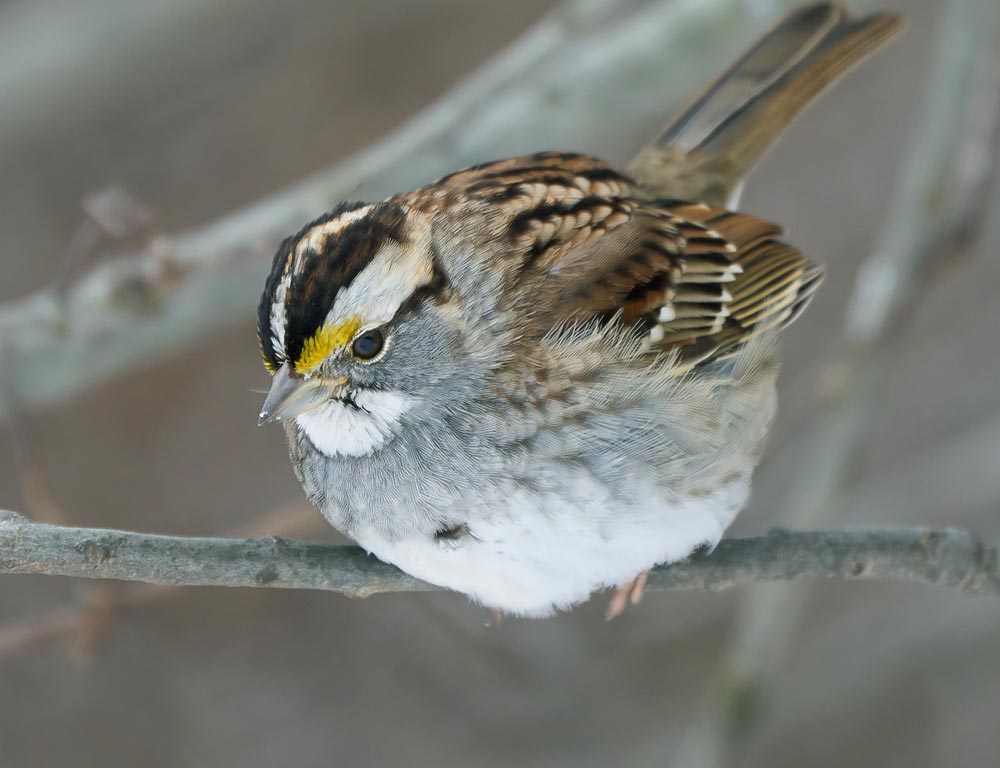
- Scientific name: Zonotrichia albicollis
- Population: Common in woodlands and shrubby areas
- Life span: 3-5 years
- Size: 6.3-7.5 inches
- Weight: 0.9-1.5 ounces
- Food: Seeds, insects, berries
The White-throated Sparrow is easily identified by its crisp black and white head stripes and the bright white throat patch.
This species is often found in woodlands, shrubby areas, and gardens. White-throated Sparrows feed on a varied diet of seeds, insects, and berries.
Their distinctive whistled song is a common sound in Michigan’s wooded landscapes, adding to the acoustic richness of the region.
12. Fox Sparrow
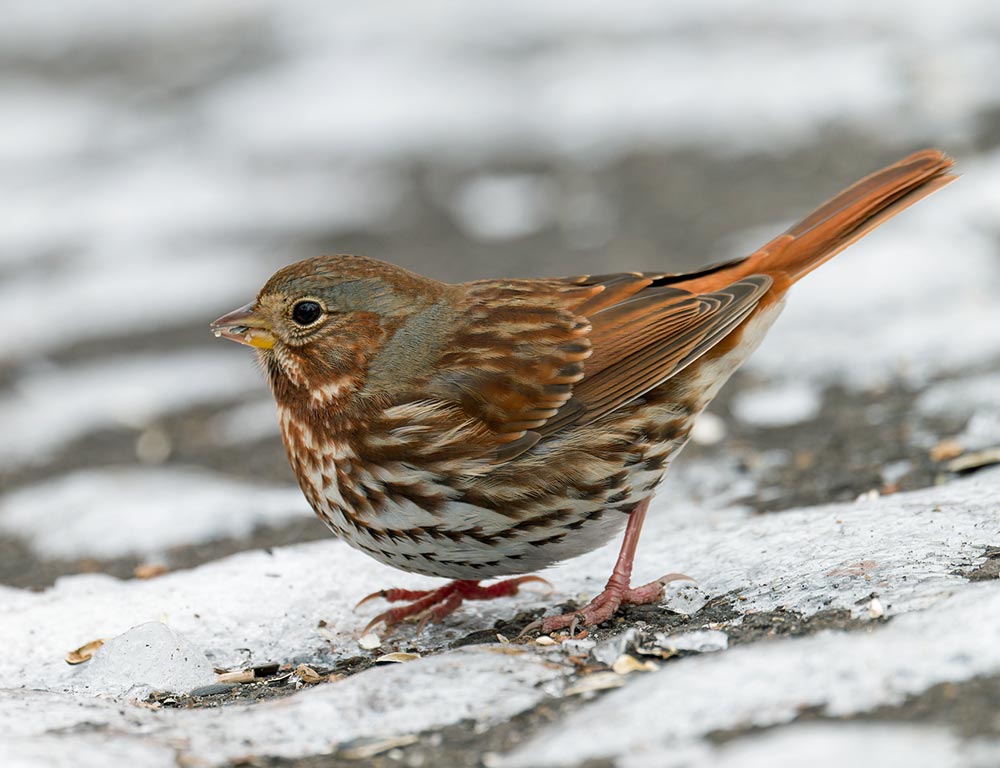
- Scientific name: Passerella iliaca
- Population: Common in dense vegetation
- Life span: 3-6 years
- Size: 5.9-7.5 inches
- Weight: 1.0-2.1 ounces
- Food: Seeds, insects, fruits
The Fox Sparrow is a large, boldly marked sparrow with rich, rusty plumage and a heavily streaked breast. This species is often found in dense undergrowth like thickets and brushy areas.
Fox Sparrows have a varied diet, including seeds, insects, and fruits. Their habit of scratching through leaf litter for food makes them well-adapted to their preferred habitats.
While they may be more elusive, their presence contributes to the ecological balance of Michigan’s wooded areas.
13. Dark-eyed Junco
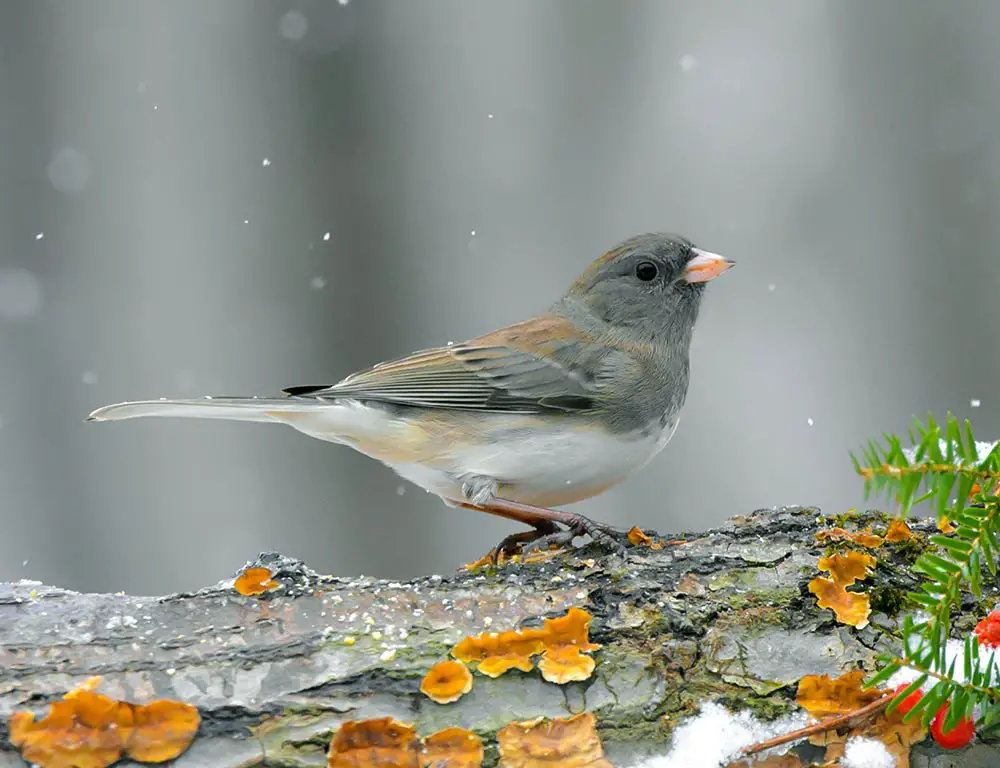
- Scientific name: Junco hyemalis
- Population: Common in woodlands and suburban areas
- Life span: 3-5 years
- Size: 5.1-6.7 inches
- Weight: 0.6-1.1 ounces
- Food: Seeds, insects
The Dark-eyed Junco is a compact sparrow with a dark hood, contrasting with its pale gray or brown body.
This species is widespread and can be found in various habitats, including woodlands and suburban areas. Dark-eyed Juncos primarily feed on seeds and insects.
During winter, their flocks add a touch of activity to backyards, where they forage on the ground for food.
The Dark-eyed Junco’s adaptability and year-round presence make it a common and recognizable bird in Michigan.
14. Eastern Towhee
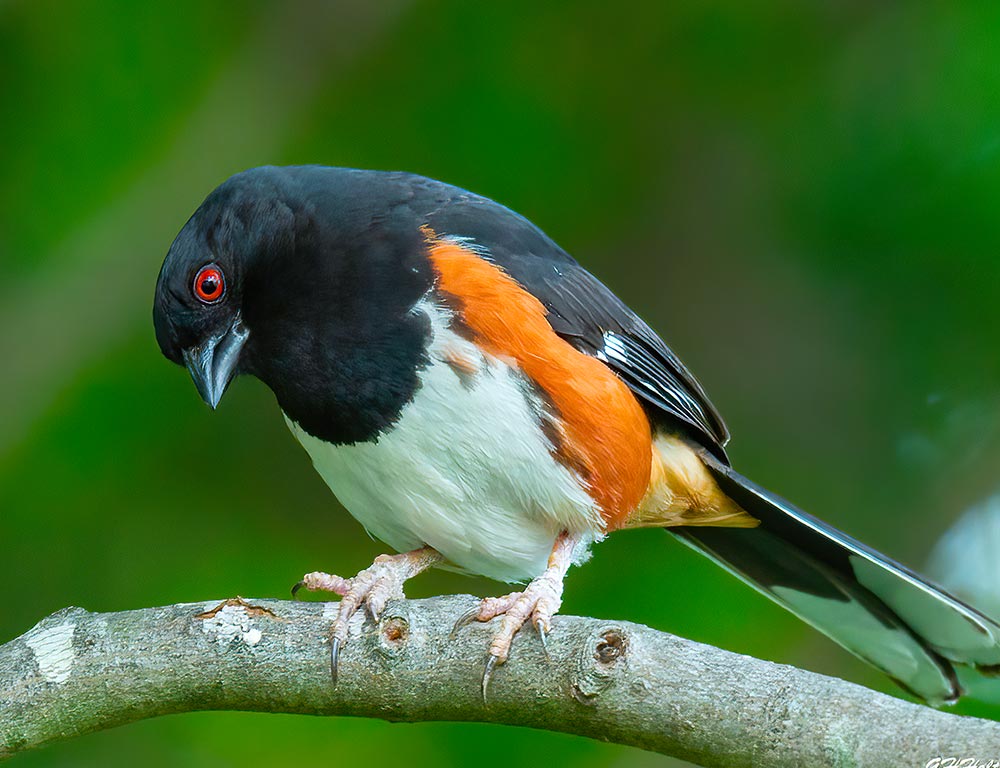
- Scientific name: Pipilo erythrophthalmus
- Population: Common in brushy habitats
- Life span: 2-10 years
- Size: 7.1-9.1 inches
- Weight: 1.1-2.3 ounces
- Food: Insects, seeds, fruits, spiders
The Eastern Towhee is a striking bird with black plumage, rufous sides, and bright red eyes.
Males have a distinct “drink-your-tea” call, and both sexes are known for their scratching behavior while foraging on the ground.
Eastern Towhees are commonly found in thickets, shrubby areas, and woodland edges.
Their diet includes insects, seeds, fruits, and spiders, contributing to the ecological balance of Michigan’s diverse habitats.
15. American Tree Sparrow
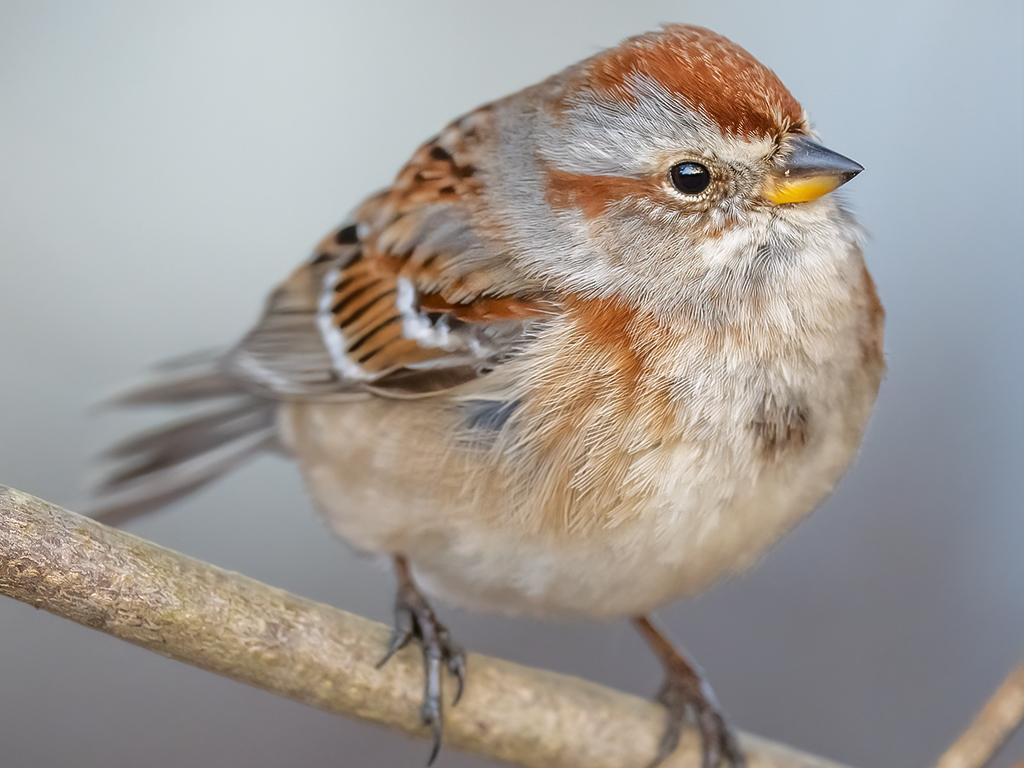
- Scientific name: Spizelloides arborea
- Population: Common in tundra and open habitats
- Life span: 2-3 years
- Size: 5.1-6.7 inches
- Weight: 0.6-1.1 ounces
- Food: Seeds, insects, berries
The American Tree Sparrow is a winter visitor to Michigan, easily identified by its rusty cap, gray face, and dark spot on the breast.
During the breeding season, they inhabit the Arctic tundra, but in winter, they migrate south to open habitats, including fields, gardens, and feeders in Michigan.
Their diet consists of seeds, insects, and berries, making them adaptable foragers. American Tree Sparrows add seasonal diversity to Michigan’s birdlife during the colder months.
16. Harris’s Sparrow
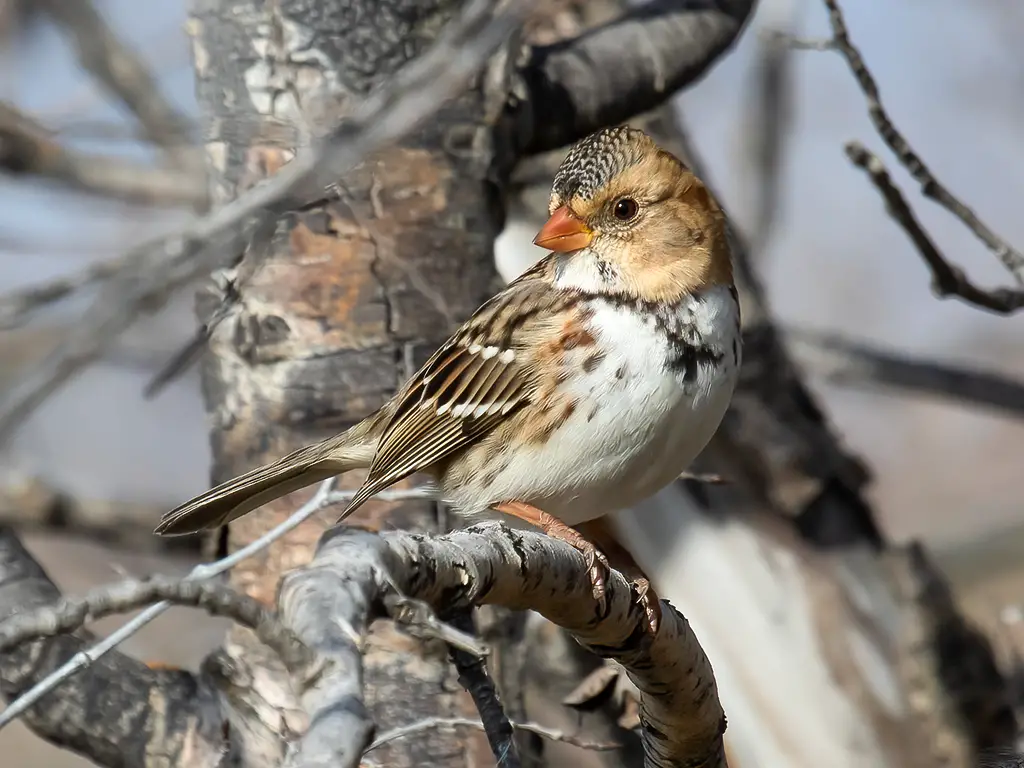
- Scientific name: Zonotrichia querula
- Population: Uncommon winter visitor
- Life span: Information not well-documented
- Size: 7.1-8.3 inches
- Weight: 1.3-2.0 ounces
- Food: Seeds, insects, berries
Harris’s Sparrow is a striking bird with a black crown, pink bill, and a contrasting white throat. This species is uncommon in Michigan, primarily seen during the winter months.
They prefer dense, shrubby habitats and are often found near feeders. Little is known about their life span, but their winter visits contribute to the state’s avian diversity.
Like other sparrows, their diet includes seeds, insects, and berries, making them adaptable foragers. Spotting a Harris’s Sparrow in Michigan is a special treat for birdwatchers due to its limited occurrence in the region.
17. Grasshopper Sparrow
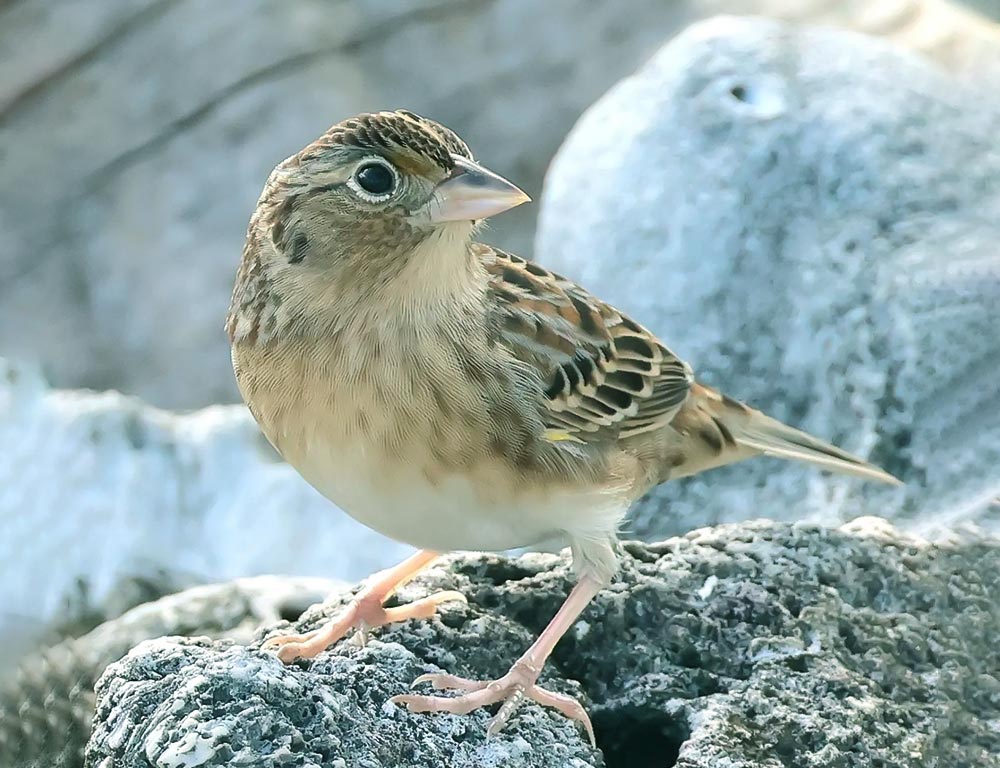
- Scientific name: Ammodramus savannarum
- Population: Declining, conservation concern
- Life span: 2-4 years
- Size: 4.7-5.9 inches
- Weight: 0.5-0.7 ounces
- Food: Insects, seeds
The Grasshopper Sparrow is a small, secretive bird with a flat head and short tail. Its plumage is often streaked, providing camouflage in its grassy habitat.
These sparrows are declining in numbers, and their conservation status is a concern. They prefer open grasslands and prairies where they forage for insects and seeds.
The Grasshopper Sparrow’s unique insect-like song is a characteristic feature, and their presence is vital for maintaining biodiversity in grassland ecosystems.
18. Lark Sparrow
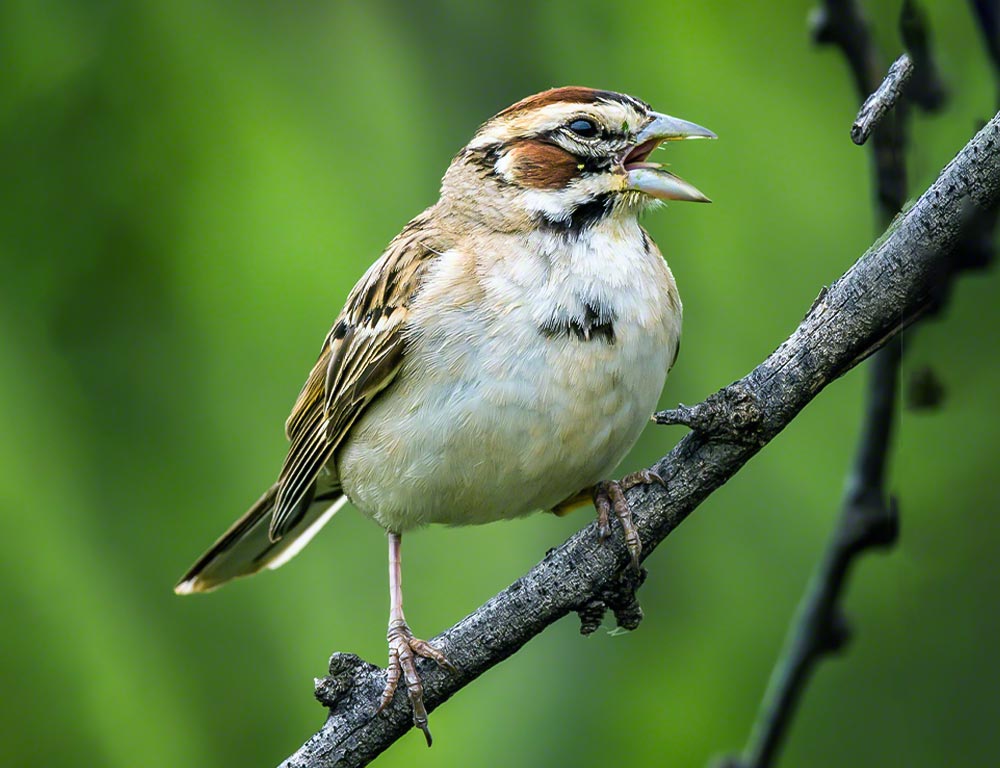
- Scientific name: Chondestes grammacus
- Population: Stable
- Life span: 2-4 years
- Size: 6.3-7.5 inches
- Weight: 1.1-1.6 ounces
- Food: Seeds, insects
The Lark Sparrow is a distinctive bird with a bold facial pattern, including a striking face mask and a crown adorned with chestnut and white stripes.
Lark Sparrows are often found in open habitats, including grasslands, prairies, and agricultural areas. They have a varied diet that includes seeds and insects.
Despite their stable population, Lark Sparrows contribute to the avian diversity of Michigan, and their unique appearance makes them a notable species for birdwatchers.
19. Brewer’s Sparrow
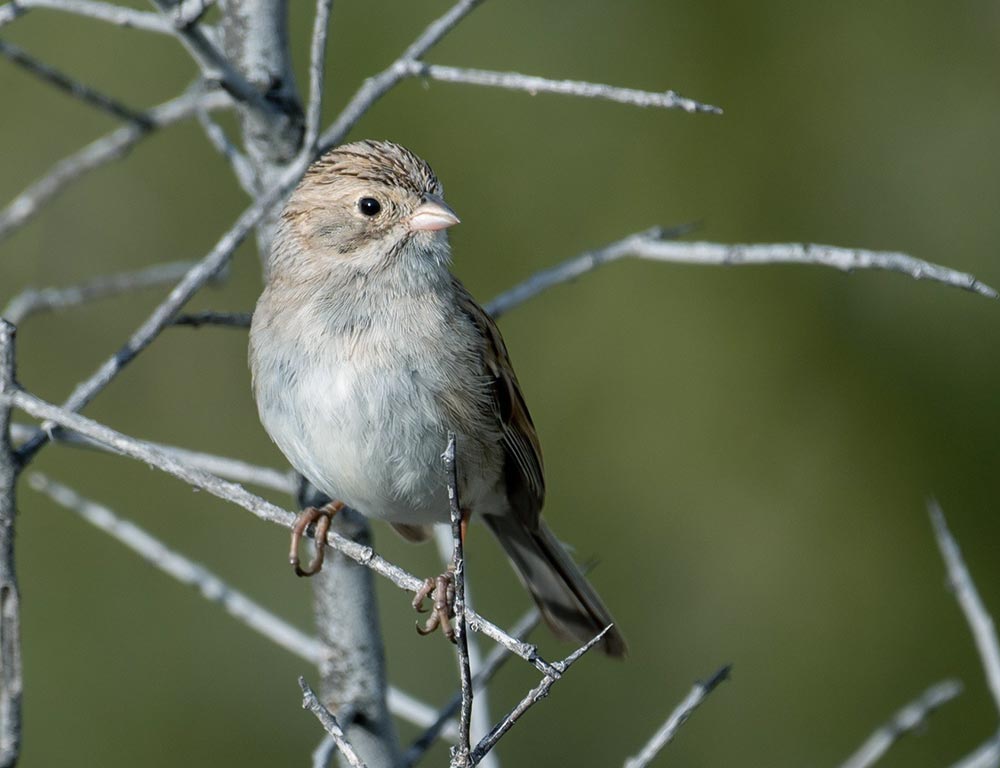
- Scientific name: Spizella breweri
- Population: Declining in some areas
- Life span: Information not well-documented
- Size: 4.7-5.5 inches
- Weight: 0.3-0.5 ounces
- Food: Seeds, insects
Brewer’s Sparrow is a small, subtly colored bird with a grayish-brown plumage and a pale eye-ring. This species is often found in sagebrush habitats, making them less common in Michigan compared to western regions.
Brewer’s Sparrows have faced population declines in some areas, highlighting the importance of conservation efforts.
Their diet includes seeds and insects; their presence in Michigan adds to the state’s overall biodiversity.
Spotting a Brewer’s Sparrow can be a unique experience, especially in areas where their populations are less common.
Wrapping Up
Michigan’s sparrows, ranging from the familiar House Sparrow to the rare Grasshopper Sparrow, showcase the state’s avian diversity.
These small birds play vital roles in various ecosystems, contributing to seed dispersal and insect control.
We gain a deeper appreciation for Michigan’s interconnected web of life as we explore their unique plumage, habitats, and behaviors.
From the grasslands to woodlands, sparrows bring melodies and ecological significance to the Great Lakes State. Thank you so much.